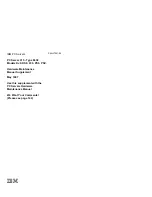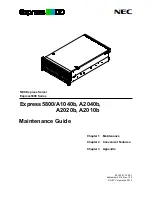
59
The Traffic Server cache consists of a high speed object database called the object store that indexes objects
according to URLs and associated headers.
This chapter discusses the following topics:
•
The Traffic Server Cache‚ on page 59
•
Clearing the cache‚ on page 62
•
Partitioning the cache‚ on page 59
•
Partitioning the cache‚ on page 59
The Traffic Server Cache
The Traffic Server cache consists of a high speed object database called the object store. The object store
indexes objects according to URLs and their associated headers enabling Traffic Server to store, retrieve, and
serve not only web pages, but parts of web pages, providing optimum bandwidth savings. Using sophisticated
object management, the object store can cache alternate versions of the same object, varying on spoken
language or browser type and can efficiently store very small and very large documents, minimizing wasted
space. When the cache begins to fill, the Traffic Server mobilizes garbage collectors to remove stale data,
ensuring that the most requested objects are kept on-hand and fresh.
Traffic Server is designed to tolerate total disk failures on any of the cache disks. If the disk fails completely,
Traffic Server marks the entire disk as corrupt and continues using the remaining disks. An alarm is sent to
Traffic Manager indicating which disk failed. If all of the cache disks fail, Traffic Server goes into proxy-only
mode.
You can perform the following cache configuration tasks:
•
Change the total amount of disk space allocated to the cache. Refer to
Partitioning the cache‚ on page 59
.
•
Partition the cache by reserving cache disk space for specific protocols and origin servers/domains. Refer
to
Partitioning the cache‚ on page 59
.
•
Delete all data in the cache. Refer to
Clearing the cache‚ on page 62
.
RAM cache
Traffic Server maintains a small RAM memory cache of extremely popular objects. This RAM cache serves
the most popular objects as fast as possible and reduces load on disks, especially during temporary traffic
peaks. You can configure the RAM cache size to suit your needs.
Partitioning the cache
You can manage your cache space more efficiently and restrict disk usage by creating cache partitions of
different sizes for specific protocols. You can further configure these partitions to store data from specific
origin servers and/or domains.
8 Configuring the cache
IMPORTANT
The partition configuration must be the same on all nodes in a cluster.
















































